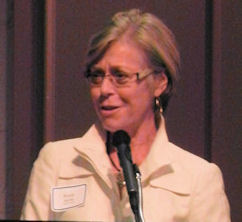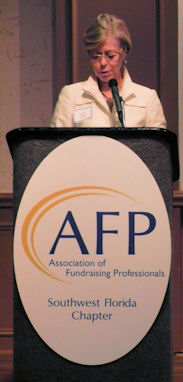 Many of my clients have never used prospect research before. Many of them have used it. All of them have questions about what they need in a profile and how they can use it. If they have these questions, I figure lots of fundraisers out there might be wondering the same thing.
Many of my clients have never used prospect research before. Many of them have used it. All of them have questions about what they need in a profile and how they can use it. If they have these questions, I figure lots of fundraisers out there might be wondering the same thing.
We know we use prospect profiles to inform cultivation and solicitation – to help us ask for the largest appropriate gift. In addition to sometimes finding surprising and new information about a prospect, profiles often confirm and validate the fundraiser’s assessment of the prospect, providing even more confidence in preparing for the ask.
Using Profile Levels
I like to leave it up to the fundraiser to decide just how much information she needs. You know yourself and your prospect the best. But I do like to give different levels of profiles to choose from:
Identification Profile – A brief profile to confirm the ability to give and look at giving history and community involvement. A major gift capacity rating is provided. This is for when you don’t know anything about the prospect or need to confirm wealth and inclination before spending your time.
Solicitation Profile – A long profile that searches for everything relevant to making an ask for a major gift. In addition to capacity ratings, this profile includes an executive summary to help you with strategy. As the name implies, this profile helps you prepare for a major gift solicitation.
The Customized Approach
These are the two most popular profiles among Aspire Research Group clients, but they are used in many ways and sometimes customized:
- One client in a campaign preferred Solicitation profiles first on her prospects, with an update as she neared the actual ask. She knew her campaign volunteers had great connections and wanted a head start on her strategy. It worked.
- Another client had budget restraints, but really needed more than the Identification profile. We came up with a custom profile that addressed her specific need-to-know items, but remained within her budget.
- A consultant client needed a profile more basic than Identification, as a way of prioritizing donors for small organizations. We did it.
The Pitfalls to Avoid
It all sounds so easy, doesn’t it? Warning! There are some common mistakes that fundraisers make when requesting profiles:
- Asking for profiles as a way of showing activity, when really you are just too afraid to call on the prospects
- Asking for a profile when you have no way of connecting with the person and no idea if the person has any interest in your organization (e.g., the local version of pursuing Oprah Winfrey)
- Requesting a standard profile when what you really need are specific questions answered
An Unbeatable Team!
The most experienced and successful fundraisers do something differently when it comes to prospect profiles. They communicate regularly with the prospect researcher!
- When you talk to the researcher about your donor prospect and what information you need to move forward, she can give you a much better profile.
- When you review the profile with the researcher to help you match your personal knowledge with the “paper” knowledge, you gain a much deeper and more colorful picture of your prospect.
- And when you share the results of your visits with the researcher you create an unbeatable team!
Do you have an unbeatable team?
If you are considering using prospect profiles as part of your major gifts strategy, call Aspire Research Group to learn more about how we can help you reach your fundraising goals with research: 727 202 3405 or visit www.AspireResearchGroup.com
Dating Donors, Data Mining & Donor Profiles -oh my!
Score a touchdown with prospect profiles
Is Prospect Research Too Expensive?
Identification Profile (PDF download)
Solicitation Profile (PDF download)







 I recently had the opportunity to meet up with Suzanne Nixon, State Director of Development for Devereux in Florida. We had such an interesting conversation that I asked her if I could share some of it with Aspire Research Group readers. Wouldn’t you know it, she said yes. Thanks Suzanne!
I recently had the opportunity to meet up with Suzanne Nixon, State Director of Development for Devereux in Florida. We had such an interesting conversation that I asked her if I could share some of it with Aspire Research Group readers. Wouldn’t you know it, she said yes. Thanks Suzanne!
